
What is Scoliosis?
Scoliosis is a condition characterized by the abnormal curvature of the spine. This occurs secondary to a 3 dimensional deformity of the spine. This causes a C or S shaped curve when looking from behind, rotates the ribs on one side to cause rib prominence and usually flattens out normal bends (kyphosis) in the spine when looking at the spine from the side. This understanding of the 3 dimensional balance of the spine has revolutionized how we diagnose and treat Scoliosis.
Types of Scoliosis
Scoliosis can be classified into five categories, depending on the age group affected:
- Congenital scoliosis: Spinal deformity is already present at birth. It occurs due to an abnormality in the formation of fetal ribs and spinal bones within the womb. There are structural changes in the bone
- Infantile scoliosis: Affects children below 3 years of age.
- Juvenile scoliosis: Seen in children in the age group of 4 to 10 years.
- Adolescent scoliosis: Affects teenagers and early teens (11 to 18 years)
- Adult scoliosis: Affects individuals above the age of 18 years
Causes of Scoliosis
Scoliosis can be caused by a wide variety of conditions, depending on which it has been categorized into:
- Idiopathic scoliosis: This comprises the group of scoliosis in which the underlying cause has not been identified. There seems to be some genetic predisposition for idiopathic scoliosis as it is more common in people with a family history of scoliosis. This is the most common type of scoliosis we see.
- Functional or nonstructural scoliosis: This refers to a category of scoliosis where in the spine looks curved even in the absence of true spinal deformity. This may result from an underlying inflammatory conditions or as a compensatory response to unequal leg lengths
- Neuromuscular scoliosis: This form of scoliosis can occur due to underlying neurological or muscular conditions such as cerebral palsy, muscular dystrophy and spina bifida
- Syndrome-associated scoliosis: This refers to scoliosis that develops as a part of an underlying syndrome. This may be a connective tissue disorder such as Marfan syndrome or associated with a variety of skeletal dysplasias. Marfan syndrome is an inherited connective tissue disorder affecting the ligaments and other supportive structures in the body. Scoliosis is commonly associated with Marfan’s syndrome and other connective tissue disorders. Skeletal dysplasia is a group of disorders often characterized by dwarfism due to abnormalities in the growth and development of bones and cartilage. A number of skeletal dysplasias may also cause scoliosis.
- Degenerative scoliosis: This form of scoliosis is associated with degenerative changes in the spine due to the aging process, such as with osteoporosis, spondylosis or degenerative disc disease. This type of scoliosis is typically seen in adults.
Symptoms of Scoliosis
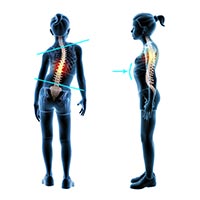
In the initial stages, idiopathic scoliosis is usually asymptomatic. The symptoms of scoliosis depend on the cause, severity, and age. Some of the common signs include spinal curvature, abnormal gait, uneven shoulders and hip, apparent difference in leg lengths, more prominent rib or shoulder blades especially when you bend forward. About 25% of children with scoliosis can have back pain. The vast majority of these are from muscle weakness and soreness and are easily treated with core strengthening exercises and therapy. In neglected long standing scoliosis with very large curves, shortness of breath with activity can occur.
Diagnosis of Scoliosis
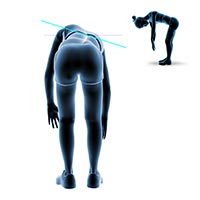
The diagnosis of scoliosis involves the review of your family and medical history along with a physical and neurological examination. Physical examination involves palpation of the spine, Adam’s forward bending test and plumb line test. A neurologic examination involves the evaluation to look for any subtle signs of underlying neurological conditions. The neurological exam checks for muscle strength, muscle reflexes, sensation and balance.
If the physical exam is suggestive of scoliosis, full length standing x-rays of the spine are obtained. This helps in determining the magnitude of the curve and skeletal maturity, which in turn will help us determine treatment options. Sometimes special bending xrays are obtained to assess the flexibility of the curvature in the spine. Xrays of the hand and wrist may also be obtained to assess how much growth is remaining.
Treatment for Scoliosis
Non-operative treatment for Scoliosis
The treatment plan is based on the cause of scoliosis, the degree and position of the spinal curve and your age. The non-operative treatment approach of scoliosis includes:
- Observation: No treatment is required for a spinal curve below 20 degrees. However, you are advised regular follow up visits to carefully monitor for the progression of the curve. We know that scoliosis tends to get worse as we grow. That is why, regular scheduled followup to monitor for progression of the curve in a growing child is extremely important
- Back bracing: A back brace may be recommended in growing children with a curve between 20-40 degrees to stop the progression of scoliosis and prevent surgery. Generally a brace is utilized to prevent progression of the scoliosis curve while the child is growing. Since every scoliosis curve is unique, custom molded braces are prescribed. Our scoliosis team will work closely with you to make sure the brace is fitting well and is being used effectively.
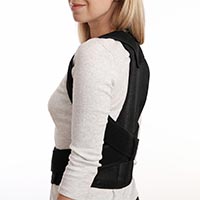
Surgery for Scoliosis
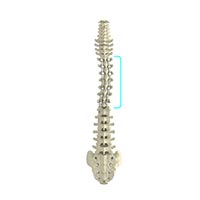
Surgery is recommended only in individuals who have developed or are at risk of developing a severe curve. Sever curves if left untreated, may affect the lungs, heart and other vital organs. Surgery for scoliosis aims at restoring the alignment and balance of the spine. This is done with metal rods, screws, and hooks to align and stabilize the spine. Complex planning and assessment of the flexibility of the spine allows us to correct the deformity in the all three planes. Parts of the spine that are flexible are left alone and this lets patients return to normal activities after 3-6 months. Most patients return to sports and activities with no restrictions.
Early Onset Scoliosis
Patients who develop scoliosis before the age of 10years are grouped in early onset scoliosis. This group of patients have unique challenges with regards to their treatment. The growth of the chest and lungs is directly related to the growth of the spine, so traditional means of treating scoliosis could potentially jeopardize the growth of the chest and lungs in this subgroup of patients.
Treatment options:
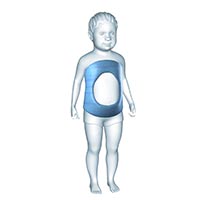
Casting and bracing: In children less than 5 years of age, especially children with idiopathic scoliosis, casting can be utilized to not only halt progression of the curve but potentially cure the patient of scoliosis. This requires multiple casts over several months followed by bracing.
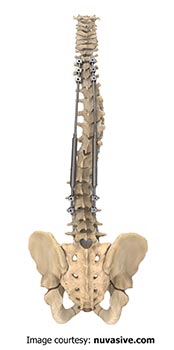
Surgery: Modified surgical techniques that allow the spine to grow while maintaining the alignment of the spine are used for older patients or in patients who have severe curves. These techniques involve special telescoping rods that are either lengthened externally using a magnet or through periodic returns to the operating room.
Traction: Occasionally the scoliosis team may recommend a short duration of gravity traction applied through the skull in preparation for surgery or casting. This is reserved for severe curves. The traction allows the spine to safely and gradually correct to a magnitude that is easier to manage with casting or surgery.

